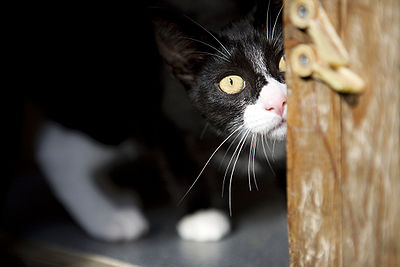You can tell a lot about what a cat is thinking by watching its ear movements.
Each ear has 32 muscles, more than 5 times the amount in human ears. That number of muscles allows the cat to turn its ears up to 180 degrees. Each movement helps the cat determine the direction of the sound. The ears are also able to move independently of each other.
Except for the Scottish Fold breed, cats ears are upright. They can move one or both ears in a different direction from their bodies.
A cat’s hearing is better than a dog’s. The can hear low and high pitched sounds equally well.
A cat’s ear position can usually tell you the cat’s mood. Here are some tips from the Humane Society of the United States (HSUS) that can help you determine your cat’s mood.
Ears that are forward – the cat is feeling content or playful.
Ears standing straight up is a sign of alertness.
Ears turned back mean this kitty is irritated about something and it’s best to leave him/her alone.
Ears turned sideways or back – the cat is feeling nervous or anxious. Use caution when approaching this cat.
Ears turned back and flat against the head could mean several things – scared, defensive, angry, aggressive – none of which you want to mess with.
Study your cat’s ear movements along with the rest of the body language and learn your cat’s moods.



